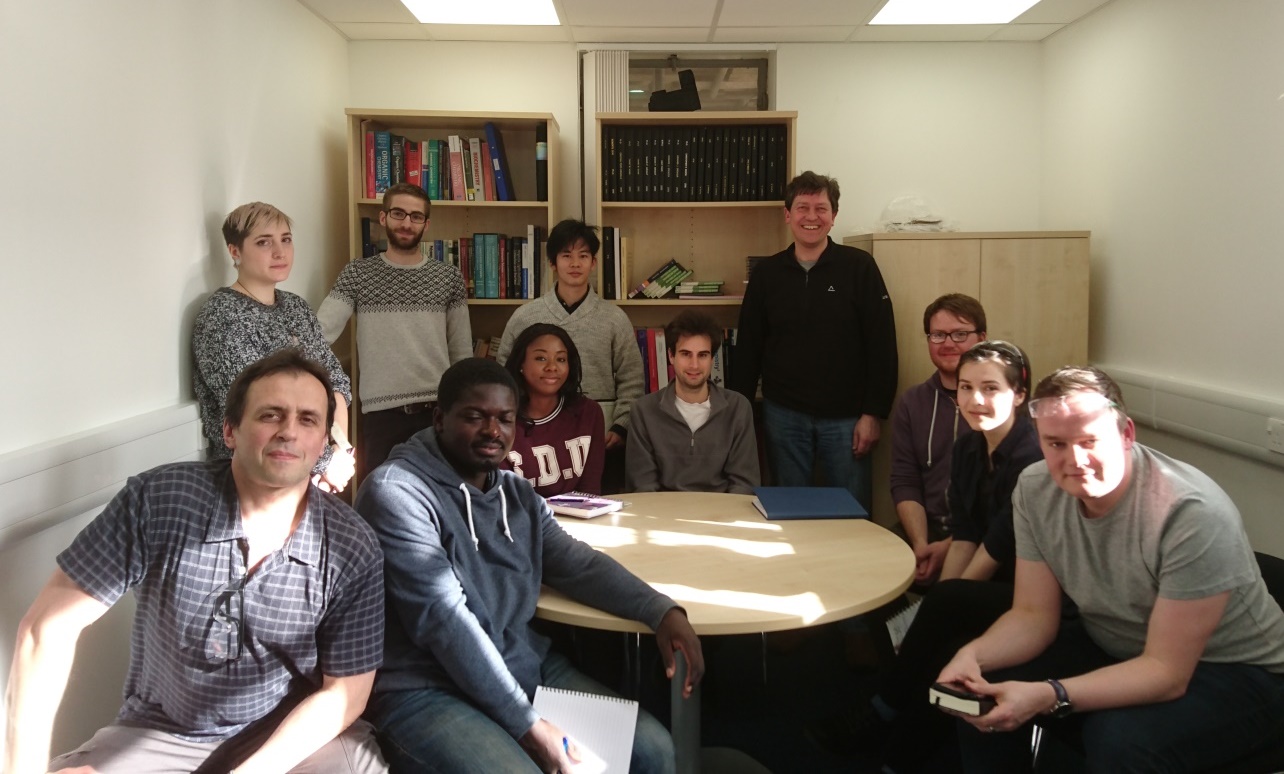Research Collaboration with the group of Prof.Skabara, Glasgow, UK





Jan. 21-March 21, 2018
Research Collaboration with the group of Prof. Peter Skabara
The University of Glasgow, UK
T. Makino
Takaaki Makino from Nagoya University visited Skabara group in the University of Glasgow for a research collaboration from January 21st to March 21st. In this collaboration, Makino learned the fabrication of organic semi-conductor devices and techniques for measurement in the glove box. Electronic property measurements of a novel D-π-A-π-D based molecule, in which triphenylamine donor molecules are linked to a core benzenethiadiazole acceptor molecule via π bonds, were then conducted. Preliminary theoretical calculations predicted p-type semiconductor behavior in the molecule due to its high HOMO and LUMO energy levels. FET measurements showed consistent results of moderate hole mobility. Further electronic characteristics evaluation will be carried out to reveal the properties of this molecule. We also conducted FET measurements of novel soluble phthalocyanine and perylene diimide molecules, which were prepared in the Awaga group. After optimization of SAM layer or annealing temperature, moderate mobility was obtained. Furthermore, a blended sample of these molecules was used for the fabrication of an organic photovoltaic cell and the photoelectric conversion characteristics examined. For optimization of the devices, various hole transporting material were tried and the ratio of blend sample, metal for electrode and its thickness, were carried. We will continue to discuss device fabrication, and perform more detailed electric property measurements towards the practical application of photovoltaic cells.
名古屋大学の牧野は、2018年1月21日から3月21日までの60日間、University of Glasgow のSkabaraグループにて共同研究を行った。本共同研究において牧野はグローブボックス中での有機半導体デバイスの作製および測定技術を習得し、ドナー部位にトリフェニルアミン、アクセプター部位にベンゾチアジアゾール骨格を有する新規D-π-A-π-D型分子の電子物性測定を行った。事前に行った分子軌道計算では、この分子は高いHOMO・LUMOレベルを持ちp型半導体特性を有すると予測され、実際のFET測定においても良好なホール移動度を示した。今後さらなる電子特性の評価を行い、この分子の物性を明らかにしていく。また阿波賀グループで合成を行った新規の可溶性フタロシアニンとペリレンジイミド分子についてFET測定を行った。SAM膜の検討およびアニーリング温度等の最適化を試み、良好な移動度が得られた。更にこれらのブレンド試料を用いて有機薄膜太陽電池デバイスの作製を行い光電変換特性の評価を行った。デバイスの最適化のため、ホール輸送層、ブレンド試料の比率、金属電極の種類および膜厚など種々の検討を行った。引き続きデバイス作製についてディスカッションを重ねて、光電変換デバイスへの応用に向けてより詳細な電子物性測定を行っていく。


